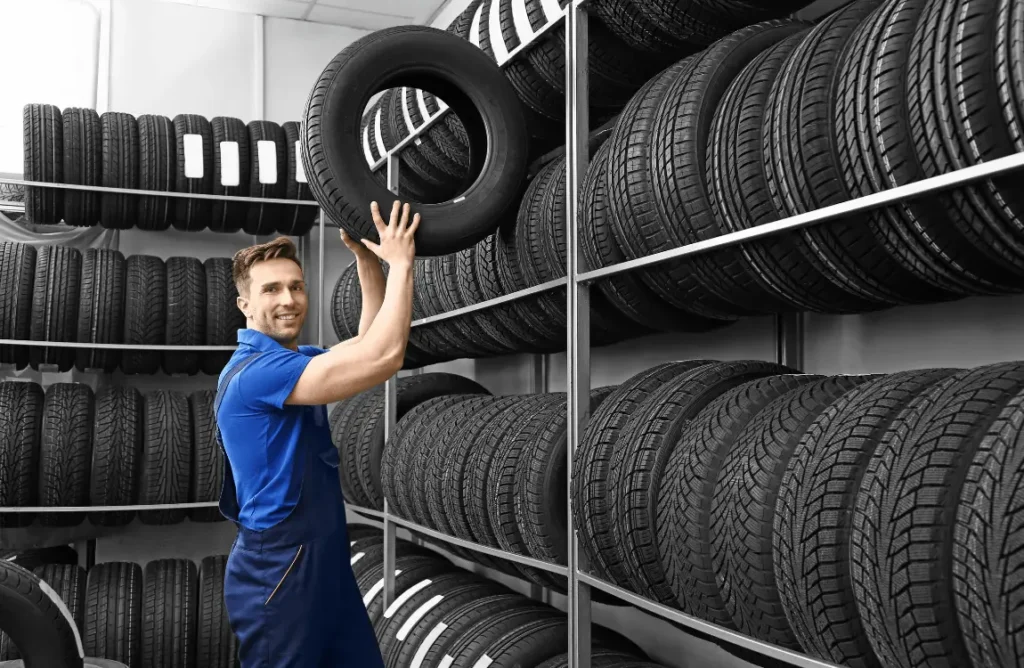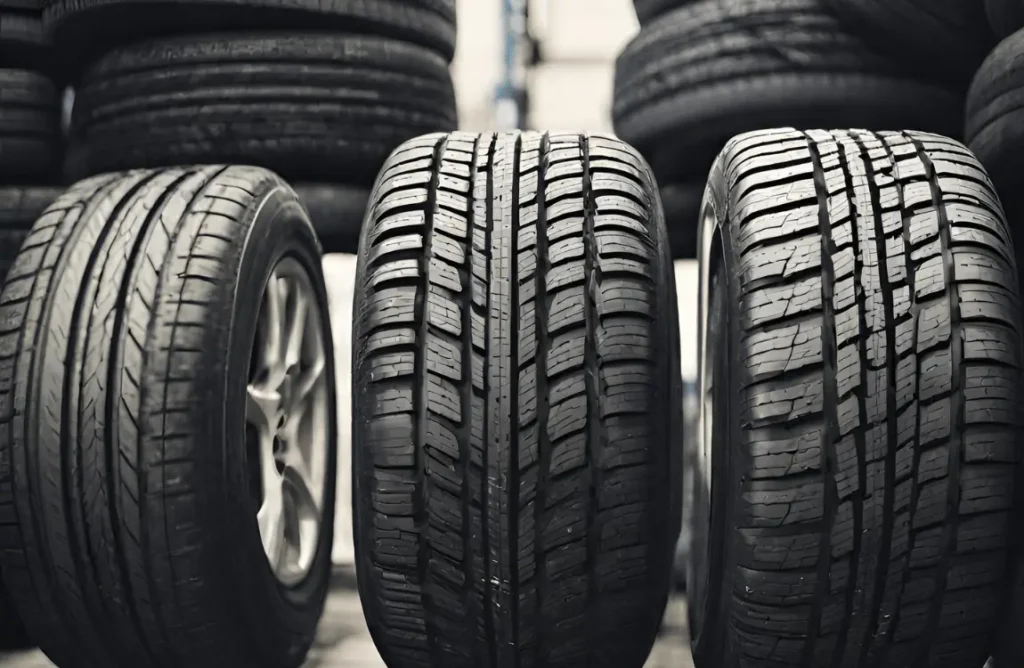The best time to buy tires for your car is either during April or October. These months often feature promotional deals to prepare for upcoming weather changes.
Deciding when to replace your car’s tires is crucial for safety and performance. Seasonal changes and retailer promotions heavily influence the ideal time to make a purchase. With road conditions shifting in spring and fall, tire companies and auto shops provide discounts to entice vehicle owners to update their tires for the wet spring roads and icy winter surfaces.
Typically, this aligns with April’s rainy season preparation and October’s lead-up to winter, offering savvy shoppers the opportunity to secure quality tires at a reduced cost. While maintaining vehicle safety is the top priority, aligning your tire purchases with these deals ensures you’re not only prepared but also getting the best value for your investment.
Maximizing Tire Longevity
Knowing the best time to buy tires is crucial, but caring for them is key. Proper maintenance extends their life. This can save money and ensure safe drives. Here are expert tips on recognizing tire wear and essential maintenance.
Recognizing Tire Wear
Regular checks keep tires healthy. Look for signs of aging such as cracks, bulges, and tread wear. Most tires have tread wear indicators and small raised areas in the bottom of the tread grooves. When these are flush with the tread, it’s time for new tires.
| Indicator | What It Means |
|---|---|
| Tread Depth | Below 1/16th of an inch means replace. |
| Cracks in Sidewall | Possible leakage, replace to avoid failure. |
| Bulges and Blisters | Weak spots were replaced to prevent a blowout. |
| Vibration | Unusual vibrations may indicate alignment issues. |
Essential Maintenance Tips
- Check tire pressure monthly. Correct pressure prevents wear and saves fuel.
- Rotate tires every 6,000 miles to even out wear.
- Balance tires often. This prevents uneven wear.
- Align wheels. Proper alignment avoids irregular tire wear.
- Clean tires regularly to remove debris.
Follow these tips to extend tire life. Choose the right time to buy. Take care of your tires, and they will take care of you. Safe travels!
Seasonal Impact On Tire Performance
The Seasonal Impact on Tire Performance plays a crucial role in maintaining your vehicle’s safety and efficiency. Just like the wardrobe changes with the seasons, tires require adjustments to match weather conditions. Knowing when to buy tires hinges on understanding their seasonal benefits and wear patterns. Let’s explore how weather trends impact your tire purchases.
Winter Tire Swapping
- Snow and ice demand winter tire installation for control and safety.
- The best time to buy winter tires is in the fall, before the first snowfall.
- Look for deep tread patterns and rubber that stay flexible in the cold.
- Consider studded tires for extra grip if local laws permit.
Summer Tire Benefits
- Summer tires offer enhanced dry and wet road performance.
- They feature special tread patterns to reduce hydroplaning.
- Replace tires in early spring to prepare for summer road trips.
- Shop for summer tires when temperatures consistently rise above 50°F.
Remember, tires influence the braking, handling, and fuel efficiency of your car. Align tire purchases with seasonal changes to maximize performance and prolong tire life. Stay ahead of weather shifts and ensure a smooth ride all year round.
Analyzing Market Trends For Tire Prices
Understanding when tire prices hit their low can lead to significant savings. Factors causing price changes include demand, promotions, and inventory levels. This section will guide you through the best times to buy tires based on market trends.
Price Fluctuations During The Year
Tire prices fluctuate throughout the year. Several factors influence these changes. They include new models, discontinued lines, and seasonal demand. Manufacturers also offer rebates or discounts at certain times. Let’s examine these fluctuations and trends.
- End of financial quarters: Companies might offer discounts to boost sales figures.
- Seasonal changes: Expect price drops as demand shifts with the weather.
- New models arriving: Older stock prices may fall to clear inventory.
Best Months To Purchase
The optimal months to buy tires are April and October. These months signal season changes. Retailers want to clear old stock. Here’s why:
| Month | Reason | Deal Potential |
|---|---|---|
| April | Transition to summer tires | High |
| October | Preparation for winter | High |
Promotions often align with these months. Black Friday sales in November also provide opportunities. Keep in mind these general trends for potential savings.
Timing Your Purchase With Deals And Promotions
Knowing the right time to purchase tires can result in significant savings. Deals and promotions are frequent and can change the total cost dramatically. Spot the best deals and align your purchase with major sales events to maximize your benefits.
Spotting Tire Discounts
Be vigilant for tire discounts year-round. Keep an eye on several indicators:
- Manufacturer rebates: Often announced on company websites.
- Email newsletters: Sign up for alerts from tire retailers.
- Social media: Follow brands for exclusive deals.
- Price-matching policies: Some retailers will match lower prices found elsewhere.
Consistently check these sources to catch discounts quickly.
Leveraging Holiday Sales
Holiday periods are prime times for promotions. Key sale events to mark on your calendar:
- Black Friday: Major markdowns on a variety of tire brands.
- Cyber Monday: Exclusive online offers following Black Friday.
- Memorial Day: Kick off summer with new tire discounts.
- Back-to-School: August deals often include tires.
- End of the Year: Retailers clear stock before the new year.
Plan your purchase around these events for the best prices.
Online Vs. In-store Tire Shopping
Choosing where to buy new tires is a big decision. You want the best deal and service. Let’s explore the pros and cons of online and in-store tire shopping.
Comparing Prices And Convenience
Online tire shopping often offers lower prices. Websites have fewer overheads than physical stores. This means savings for you. Compare prices easily with just a few clicks. You’ll find a wide range of brands and models online.
- Convenience is king online. Shop anytime, anywhere.
- No need to visit multiple stores. Everything is at your fingertips.
- Some sites display user reviews, helping you make an informed decision.
In-store shopping lets you physically check tires. Talk to experts on the spot. But stores might have limited stock. You could spend more time and money visiting different locations.
| Online | In-Store |
|---|---|
| Lower prices | Potential for higher prices |
| Shop 24/7 | Limited hours |
| Wide selection | Limited stock |
Reputation And Customer Service
Researching a store’s reputation is crucial. Look for customer reviews and ratings. See how stores handle complaints and returns. Good customer service matters.
- Online, read testimonials on independent sites.
- Check the Better Business Bureau for any issues.
- Look for responsive customer support. Live chat and email can be helpful.
In physical stores, you meet staff face-to-face. Build a relationship with the store. This can be beneficial for after-sales service and future purchases.
Check the store’s return policy. Some stores offer tire fitting and balancing. This can save you time. They might also handle warranty claims, making life easier.
| Online | In-Store |
|---|---|
| Read reviews easily | Personal interactions |
| Quick customer support channels | Relationship building potential |
| Easy comparison of policies | Direct handling of services |

Insider Tips For Smart Tire Investments
Welcome to ‘Insider Tips for Smart Tire Investments’. Cars need new tires at times. But when is the best time to buy? This section will help you save money and make smart choices. Read on for key insider tips.
Bulk Buying Pros And Cons
Buying tires in bulk might sound like a savvy move. Let’s take a closer look:
Pros:
- Better Prices: Retailers often offer discounts for buying more.
- Uniform Wear: Replacing all tires means even wear and tear.
- Preparedness: You’ll have a spare when needed.
Cons:
- Upfront Cost: More tires mean more money at once.
- Storage Issues: Tires need proper storage, or they’ll degrade.
- Potential Waste: If your car needs change, excess tires may be wasted.
The Impact Of New Models On Prices
Prices can drop when new tire models arrive. Keep an eye on tire launches:
| Time of Year | Price Impact |
|---|---|
| Spring & Fall | New models often come out. Look for clearance sales on old stock. |
| End of Year | Shops make space for new inventory. Possible deep discounts. |
Remember to compare prices and check for last year’s models. Great deals are often found then.
Frequently Asked Questions
When Should You Replace Your Car Tires?
It’s best to replace car tires every 6 years, or sooner if tread depth falls below 2/32 inch. Regularly check tread wear patterns and replace them when necessary to ensure safety and optimal performance.
How Do Seasonal Conditions Affect Tire Purchases?
Seasonal conditions greatly affect tire purchases. In winter, snow tires are essential for safety in snowy regions. In contrast, spring or fall often brings deals on all-season tires, accommodating a broader range of weather changes.
What Is The Best Month To Buy Tires?
October and April are considered the best months to buy tires. These months precede winter and summer, prompting retailers to offer discounts to clear out inventory before the start of the new season.
Do Tire Prices Fluctuate Throughout The Year?
Yes, tire prices can fluctuate throughout the year. Retailers often discount tires during April and October to make room for new inventory. Also, Black Friday and other holiday sales are good times to find deals.
Conclusion
Selecting the right moment to buy tires can lead to significant savings and improved safety. Timing your purchase with seasonal changes can optimize performance and longevity. Remember, early fall or during sales are ideal opportunities to shop. Safe travels begin with the right tires at the best price—plan accordingly.





















